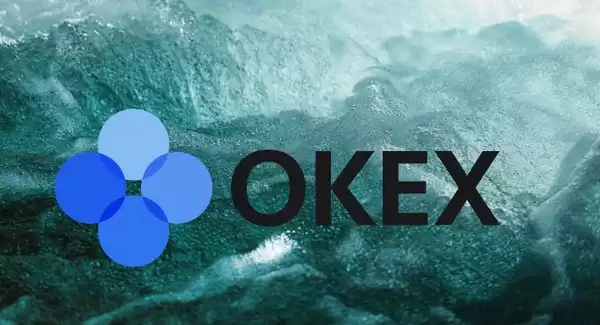-
 bitcoin
bitcoin $124586.364639 USD
0.62% -
 ethereum
ethereum $4670.671710 USD
3.33% -
 xrp
xrp $2.983701 USD
0.18% -
 tether
tether $1.000175 USD
-0.03% -
 bnb
bnb $1209.430642 USD
2.76% -
 solana
solana $231.365861 USD
0.51% -
 usd-coin
usd-coin $0.999665 USD
-0.02% -
 dogecoin
dogecoin $0.264657 USD
4.46% -
 tron
tron $0.346415 USD
1.60% -
 cardano
cardano $0.871586 USD
3.70% -
 chainlink
chainlink $23.451270 USD
7.56% -
 hyperliquid
hyperliquid $46.860071 USD
-2.96% -
 ethena-usde
ethena-usde $1.000120 USD
0.04% -
 sui
sui $3.611279 USD
1.08% -
 stellar
stellar $0.407149 USD
0.96%
How to make money from OKX contract trading
Contract trading involves using leverage to speculate on price fluctuations without owning the underlying asset, offering both higher potential profits and risks.
Nov 07, 2024 at 02:53 pm

Contract trading involves speculating on the price fluctuations of an underlying asset without owning it physically. Unlike spot trading, contract trading allows traders to use leverage, which amplifies potential profits (and losses). OKX offers a wide range of perpetual contracts with different leverage levels, allowing traders to tailor their risk exposure.
To delve into contract trading, it's essential to grasp key concepts:
- Contract Size: The number of underlying assets represented by each contract.
- Ticker: A unique identifier for each contract, typically consisting of the underlying asset, expiration date, and leverage level (e.g., BTC-USD-SWAP).
- Leverage: The multiplier that amplifies the trader's position size. Higher leverage increases potential profits but also magnifies risks.
- Margin: A portion of the trader's account balance set aside as collateral to cover potential losses. Higher leverage requires higher margin.
To start contract trading on OKX, you'll need to:
- Create an account: Provide personal and financial information to establish an account.
- Verify your identity: Complete Know-Your-Customer (KYC) procedures to verify your identity and meet regulatory requirements.
- Fund your account: Deposit funds into your account through various supported methods, such as bank transfer, credit card, or cryptocurrency.
OKX offers a diverse selection of perpetual contracts covering numerous cryptocurrencies, commodities, and other assets.
When choosing a contract:
- Consider the underlying asset: Research the market trend and volatility of the underlying asset.
- Select leverage wisely: Assess your risk tolerance and choose a leverage level that aligns with your trading strategy.
- Manage risk exposure: Monitor your open positions and utilize risk management tools such as stop-loss orders to limit potential losses.
To execute a contract trade:
- Decide the order type: Choose from various order types, including market orders (executed immediately), limit orders (executed when the market price reaches a specified level), and stop-limit orders (executed when the market price crosses a certain threshold).
- Set the parameters: Specify the contract quantity, leverage level (if applicable), order price (for limit orders), and take-profit or stop-loss levels (optional).
- Submit the order: Confirm the order details and submit it to the exchange for execution.
Once an order is executed, it's crucial to:
- Monitor market movements: Keep track of price fluctuations and market news to gauge the performance of your trades.
- Adjust positions: Modify or close open positions based on market conditions to maximize profits or minimize losses.
- Manage risk: Utilize stop-loss orders to limit potential losses, monitor your margin balance, and adjust leverage accordingly.
After generating profits from contract trading, you can withdraw them in several ways:
- Convert to spot assets: Sell your contract positions and convert the proceeds into spot cryptocurrencies, such as Bitcoin (BTC) or Ethereum (ETH).
- Withdraw funds: Once converted, you can withdraw funds from your OKX account to your bank account, crypto wallet, or other supported destination.
- Educate yourself: Continuously educate yourself about contract trading concepts, market dynamics, and risk management strategies.
- Practice with a demo account: Test your strategies and hone your skills without risking real capital.
- Start small: Begin with small trades and gradually increase position sizes as your confidence and experience grow.
- Manage emotions: Avoid trading based on emotions. Stick to your trading plan and manage your risk exposure effectively.
- Diversify portfolio: Spread your trades across multiple contracts to reduce overall risk.
Disclaimer:info@kdj.com
The information provided is not trading advice. kdj.com does not assume any responsibility for any investments made based on the information provided in this article. Cryptocurrencies are highly volatile and it is highly recommended that you invest with caution after thorough research!
If you believe that the content used on this website infringes your copyright, please contact us immediately (info@kdj.com) and we will delete it promptly.
- BlockDAG, DOGE, HYPE Sponsorship: Crypto Trends Shaping 2025
- 2025-10-01 00:25:13
- Deutsche Börse and Circle: A StableCoin Adoption Powerhouse in Europe
- 2025-10-01 00:25:13
- BlockDAG's Presale Buzz: Is It the Crypto to Watch in October 2025?
- 2025-10-01 00:30:13
- Bitcoin, Crypto, and IQ: When Genius Meets Digital Gold?
- 2025-10-01 00:30:13
- Stablecoins, American Innovation, and Wallet Tokens: The Next Frontier
- 2025-10-01 00:35:12
- NBU, Coins, and Crypto in Ukraine: A New Yorker's Take
- 2025-10-01 00:45:14
Related knowledge

Practical parameter settings for a Bitcoin multi-timeframe moving average system
Sep 18,2025 at 10:54pm
Optimizing Timeframe Combinations for Bitcoin Trading1. Selecting appropriate timeframes is crucial when building a multi-timeframe moving average sys...

How can I filter out false breakouts in Dogecoin high-frequency trading?
Sep 22,2025 at 01:00am
Understanding False Breakouts in Dogecoin Trading1. A false breakout occurs when Dogecoin's price appears to move beyond a defined support or resistan...

Techniques for identifying tops and bottoms in the Bitcoin on-chain NVT model
Sep 20,2025 at 07:54pm
Understanding the NVT Model in Bitcoin Analysis1. The Network Value to Transactions (NVT) ratio is often described as the 'P/E ratio' of the cryptocur...

What does the surge in open interest in Bitcoincoin futures mean?
Sep 20,2025 at 11:18pm
Understanding the Surge in Dogecoin Futures Open Interest1. A surge in open interest within Dogecoin futures indicates a growing number of active cont...

How can I use the Ethereum USDT premium to gauge market sentiment?
Sep 18,2025 at 11:55pm
Understanding the Ethereum USDT Premium1. The Ethereum USDT premium refers to the price difference between USDT (Tether) traded on Ethereum-based plat...

What should I do if Ethereum staking yields decline?
Sep 20,2025 at 06:18am
Understanding the Causes Behind Declining Ethereum Staking Yields1. The Ethereum network transitioned to a proof-of-stake consensus mechanism with the...

Practical parameter settings for a Bitcoin multi-timeframe moving average system
Sep 18,2025 at 10:54pm
Optimizing Timeframe Combinations for Bitcoin Trading1. Selecting appropriate timeframes is crucial when building a multi-timeframe moving average sys...

How can I filter out false breakouts in Dogecoin high-frequency trading?
Sep 22,2025 at 01:00am
Understanding False Breakouts in Dogecoin Trading1. A false breakout occurs when Dogecoin's price appears to move beyond a defined support or resistan...

Techniques for identifying tops and bottoms in the Bitcoin on-chain NVT model
Sep 20,2025 at 07:54pm
Understanding the NVT Model in Bitcoin Analysis1. The Network Value to Transactions (NVT) ratio is often described as the 'P/E ratio' of the cryptocur...

What does the surge in open interest in Bitcoincoin futures mean?
Sep 20,2025 at 11:18pm
Understanding the Surge in Dogecoin Futures Open Interest1. A surge in open interest within Dogecoin futures indicates a growing number of active cont...

How can I use the Ethereum USDT premium to gauge market sentiment?
Sep 18,2025 at 11:55pm
Understanding the Ethereum USDT Premium1. The Ethereum USDT premium refers to the price difference between USDT (Tether) traded on Ethereum-based plat...

What should I do if Ethereum staking yields decline?
Sep 20,2025 at 06:18am
Understanding the Causes Behind Declining Ethereum Staking Yields1. The Ethereum network transitioned to a proof-of-stake consensus mechanism with the...
See all articles










































































